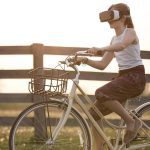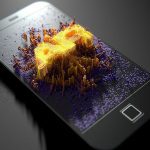The big problem with most data collection is that we have to make huge assumptions about what it means. So, for example, we assume that when somebody clicks through to a story they are interested in it. We assume that if they leave a page open that they are reading and engaging with it. And we assume that if they view what we want them to see, they are engaged with it. But … [Read more...] about 4 Signs Your Business Needs VR Analytics
AR / VR
Explore the world of virtual and augmented reality. Discover the latest advancements in VR and AR technology and how they are being used in various industries. Learn how to get started with VR and AR and find resources for further learning.
4 Technical Challenges AR and VR Need To Solve In 2018
Apple has recently launched ARKit to help developers make augmented reality applications for the iOS platform. Google has several projects like Daydream and Google Cardboard to provide low cost virtual reality experiences. The industry standards, the Oculus Rift and the HTC Vive have also grown leaps and bounds in the last few years. Virtual and Augmented reality are finally … [Read more...] about 4 Technical Challenges AR and VR Need To Solve In 2018
How Retailers are Leveraging Augmented Reality this Holiday Season
The National Retail Federation predicts that between November and December 2017, holiday retail sales will top out at $678.75 billion. As shoppers across the country prepare to drop some serious cash over the next few weeks, they'll have greater access than ever before to digital technologies that transform the way they shop for, try on, and try out products. Taking center … [Read more...] about How Retailers are Leveraging Augmented Reality this Holiday Season
Mobile Data Traffic Explosion: Explore IoT, 5G, & VR Opportunities
The technology revolution of the 21st Century has opened the avenues towards many possibilities. We now have a mobile data traffic explosion on our hands, which can end up expanding growth while we move into the next decade. Due to a continuous upwards curve in the number of people using mobile phones, global mobile data is set to witness a steep rise in its chart. The rise has … [Read more...] about Mobile Data Traffic Explosion: Explore IoT, 5G, & VR Opportunities
10 Best Arkit Apps for iOS 11 You Must Try
If you are a big iPhone lover, must have heard about Arkit - augmented reality framework for iOS 11 introduced at recent WWDC17, available for anyone with an iPhone 6S or later, the latest 9.7-inch iPad and the iPad Pro. Following this latest iPhone feature, developers started to create ARkit apps for iOS 11. Thus several interesting Arkit apps have been rendering in the app … [Read more...] about 10 Best Arkit Apps for iOS 11 You Must Try
What is virtual reality (VR)?
VR is a computer-generated simulation of a three-dimensional environment that can be interacted with in a seemingly real or physical way. VR is typically experienced using a headset and hand controllers, which track the user’s movements and allow them to interact with the virtual environment.
VR can be used for a variety of purposes, such as gaming, training, and entertainment. It has the potential to create immersive and interactive experiences that are not possible in the real world.
What is augmented reality (AR)?
AR is a technology that superimposes digital information or graphics onto the real world, creating a layered experience. AR can be experienced through devices such as smartphones, tablets, or specialized glasses, which use cameras and sensors to track the user’s movements and display the digital content on top of the real world.
AR is used for a variety of applications, including gaming, education, and advertising. It has the potential to enhance the real world with interactive and informative digital content.
What are the differences between VR and AR?
VR creates a fully immersive, computer-generated environment, while AR enhances the real world with digital information. VR requires specialized equipment, such as a headset and hand controllers, to experience, while AR can be accessed through everyday devices such as smartphones.
VR is typically used for fully immersive experiences, while AR is more commonly used for overlaying digital content onto the real world.
What are some examples of VR and AR?
Examples of VR include video games, educational simulations, and virtual tours. Examples of AR include Pokemon Go, Snapchat filters, and interactive museum exhibits. These are just a few examples of the many possible applications of VR and AR, which are being used in a wide range of industries and contexts.
How can I learn more about VR and AR?
There are many resources available for learning about VR and AR on Datafloq, including online courses, books, and industry events. Online courses, such as those offered by Coursera, edX, and Udacity, can provide a comprehensive overview of the technologies and their applications.
There are also many books on VR and AR that cover various aspects of the technologies and their uses. Attending industry events, such as conferences or meetups, can also be a great way to learn about VR and AR and network with others in the field. It is also possible to try out VR and AR experiences at specialized centers or through demos provided by companies that develop VR and AR technology. This can be a great way to get a firsthand experience of what these technologies are capable of.






